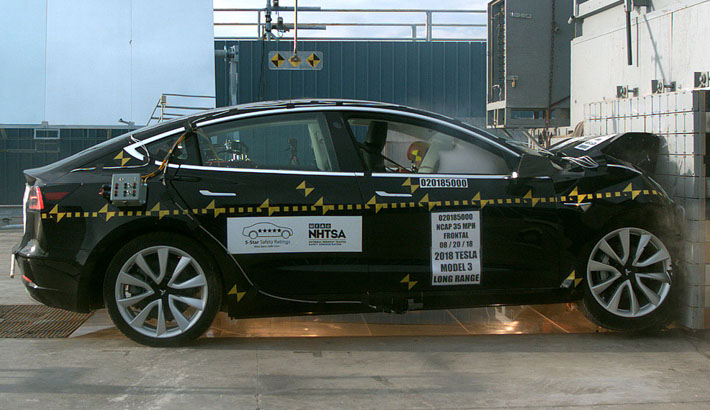
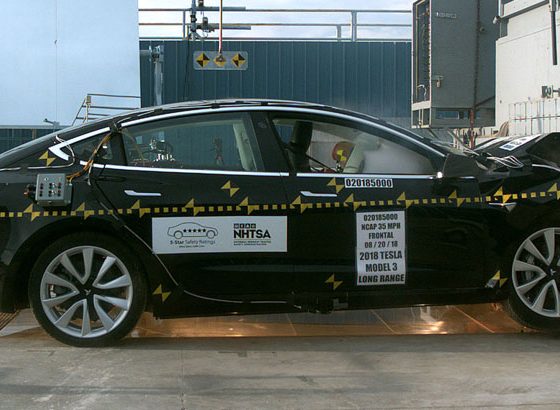
Investor's Corner
Tesla’s Model 3 safety claims and the NHTSA’s scrutiny: A look at an old (revived) story
Multiple reports have recently emerged about the US National Highway Traffic Administration scrutinizing Tesla and the company’s claims that the Model 3 has the lowest probability of injury among vehicles tested by the agency. It should be noted that the NHTSA’s scrutiny, which involved a cease-and-desist letter to Tesla and a prompt response from the automaker, transpired last October, following the agency’s release of the Model 3’s 5-Star Safety Rating.
The NHTSA’s reaction to Tesla recently came to fore due to documents shared by staunch TSLA critic and transparency group Plainsite, which was able to access both the NHTSA’s cease-and-desist letter to Tesla as well as the electric car maker’s response to the agency thanks to a Freedom of Information Act request. What’s quite peculiar about the new string of reports, including those from Bloomberg and Reuters, is that they highlight the NHTSA’s allegations about the company’s alleged misleading claims about the Model 3, but not Tesla’s response arguing that it used the agency’s own data to arrive at its conclusions.
To get an accurate picture of this story, one must look at the full cease-and-desist letter sent by the NHTSA to Tesla, as well as the entire contents of the electric car maker’s response. A copy of each letter will be embedded in this article, to provide a full account of the two parties’ correspondence.
Following Tesla’s release of its blog post stating that the Model 3 has the lowest probability of injury among the vehicles tested by the NHTSA, the agency sent the Silicon Valley-based company a cease-and-desist letter. Addressed to Elon Musk, the letter claimed that Tesla had “issued a number of misleading statements regarding the recent Government 5-Star Ratings of the Tesla Model 3.” NHTSA Chief Counsel Jonathan Morrison, who sent the letter, further argued that statements such as “lowest probability of injury in all cars” are inaccurate and not in the best interests of consumers.
The NHSTA’s cease-and-desist letter to Tesla could be accessed below.
Tesla Model 3 Safety Claims… by Simon Alvarez on Scribd
Tesla disagreed with the NHTSA’s allegations in its response to the cease-and-desist letter. The electric car maker argued that its statements about the Model 3’s safety were neither untrue nor misleading, especially since the company used the NHTSA’s own data (which could be accessed here) when it stated that the electric sedan, as well as its largest siblings, the Model S and Model X, have the lowest probability of injury among vehicles tested by the agency. Tesla also noted that the Model 3’s achievement is “exactly what NHTSA intended with the NCAP — to encourage manufacturers to continuously immprove safety.” With this in mind, Tesla noted that there was no reason to discontinue its blog post highlighting the Model 3’s safety.
Tesla’s full response to the NHTSA could be read below.
Tesla Model 3 Safety Claims… by Simon Alvarez on Scribd
It should be noted that the NHTSA has not doubled down on its allgetations against Tesla’s statements about the Model 3. The electric car maker’s blog post explaining the Model 3’s stellar safety scores is still active today. Contrary to Plainsite’s statements that Tesla was “referred to the FTC for repeatedly lying about the safety of their vehicles,” it appears that the NHTSA opted to back down from its allegations once the electric car maker explained the rationale behind its statements about the Model 3.
The Model 3 has since gained perfect 5-Star Safety Ratings from the Euro-NCAP and the ANCAP, with both safety agencies lauding the vehicle for being one of the safest cars on the road. Following the vehicle’s crash tests, Matthew Avery, head of research at Thatcham Research, which conducts the crash tests with the Euro NCAP, noted that “Tesla has done a great job of playing the structural benefits of an electric vehicle to its advantage. The Tesla Model 3 achieved one of the highest Safety Assist scores we have seen to date.” These sentiments were echoed by ANCAP Chief Executive Officer James Goodwin, who noted that it was “great to see electric vehicles continuing to prioritize safety. It is encouraging to see Tesla give equal attention to the active safety systems and technologies on board as well as the safety fundamentals through the structure and restraints.”
H/T to Vladimir Grinshpun.

Investor's Corner
Tesla bear gets blunt with beliefs over company valuation
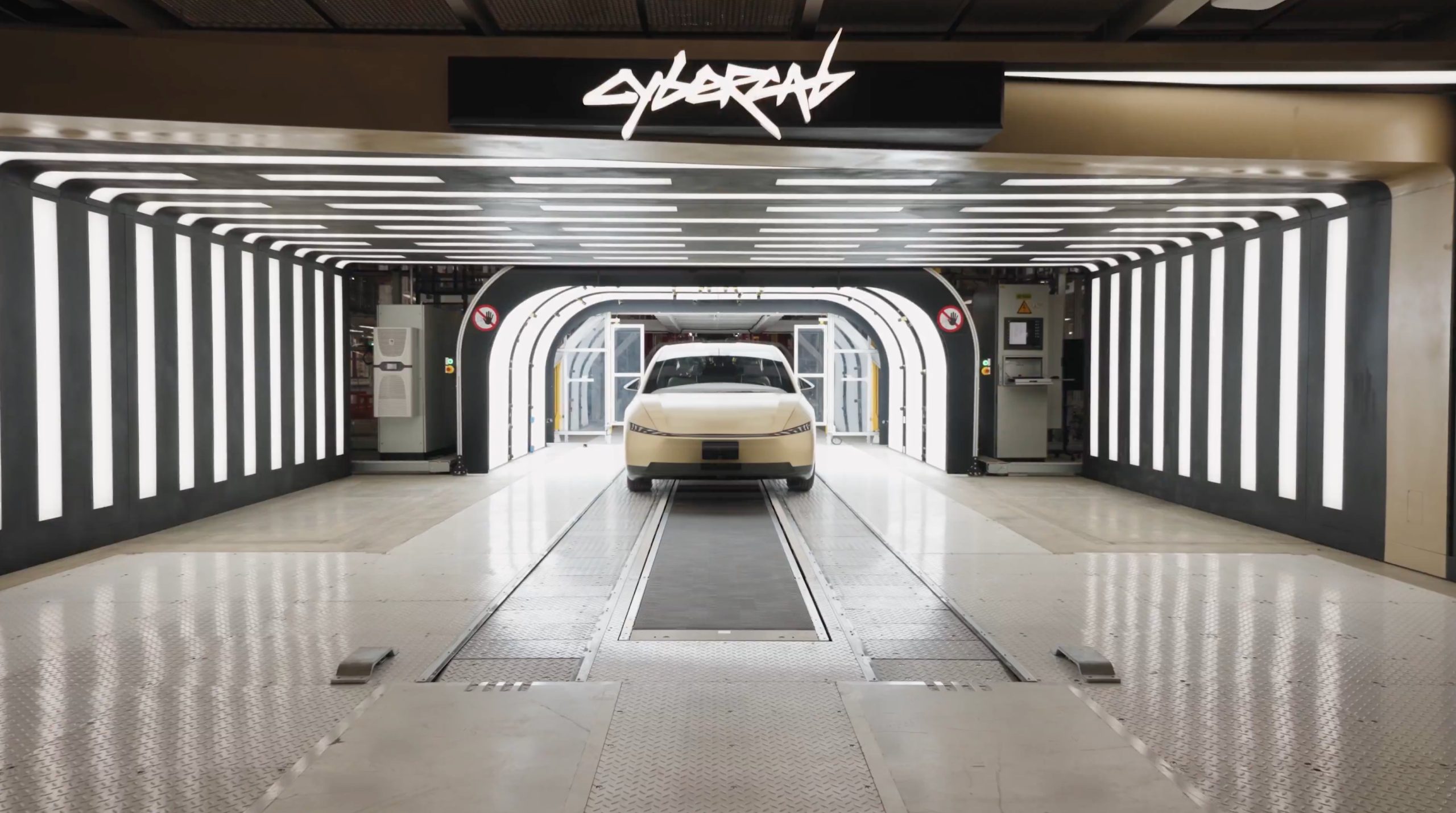
Tesla bear Michael Burry got blunt with his beliefs over the company’s valuation, which he called “ridiculously overvalued” in a newsletter to subscribers this past weekend.
“Tesla’s market capitalization is ridiculously overvalued today and has been for a good long time,” Burry, who was the inspiration for the movie The Big Short, and was portrayed by Christian Bale.
Burry went on to say, “As an aside, the Elon cult was all-in on electric cars until competition showed up, then all-in on autonomous driving until competition showed up, and now is all-in on robots — until competition shows up.”
Tesla bear Michael Burry ditches bet against $TSLA, says ‘media inflated’ the situation
For a long time, Burry has been skeptical of Tesla, its stock, and its CEO, Elon Musk, even placing a $530 million bet against shares several years ago. Eventually, Burry’s short position extended to other supporters of the company, including ARK Invest.
Tesla has long drawn skepticism from investors and more traditional analysts, who believe its valuation is overblown. However, the company is not traded as a traditional stock, something that other Wall Street firms have recognized.
While many believe the company has some serious pull as an automaker, an identity that helped it reach the valuation it has, Tesla has more than transformed into a robotics, AI, and self-driving play, pulling itself into the realm of some of the most recognizable stocks in tech.
Burry’s Scion Asset Management has put its money where its mouth is against Tesla stock on several occasions, but the firm has not yielded positive results, as shares have increased in value since 2020 by over 115 percent. The firm closed in May.
In 2020, it launched its short position, but by October 2021, it had ditched that position.
Tesla has had a tumultuous year on Wall Street, dipping significantly to around the $220 mark at one point. However, it rebounded significantly in September, climbing back up to the $400 region, as it currently trades at around $430.
It closed at $430.14 on Monday.
Investor's Corner
Mizuho keeps Tesla (TSLA) “Outperform” rating but lowers price target
As per the Mizuho analyst, upcoming changes to EV incentives in the U.S. and China could affect Tesla’s unit growth more than previously expected.
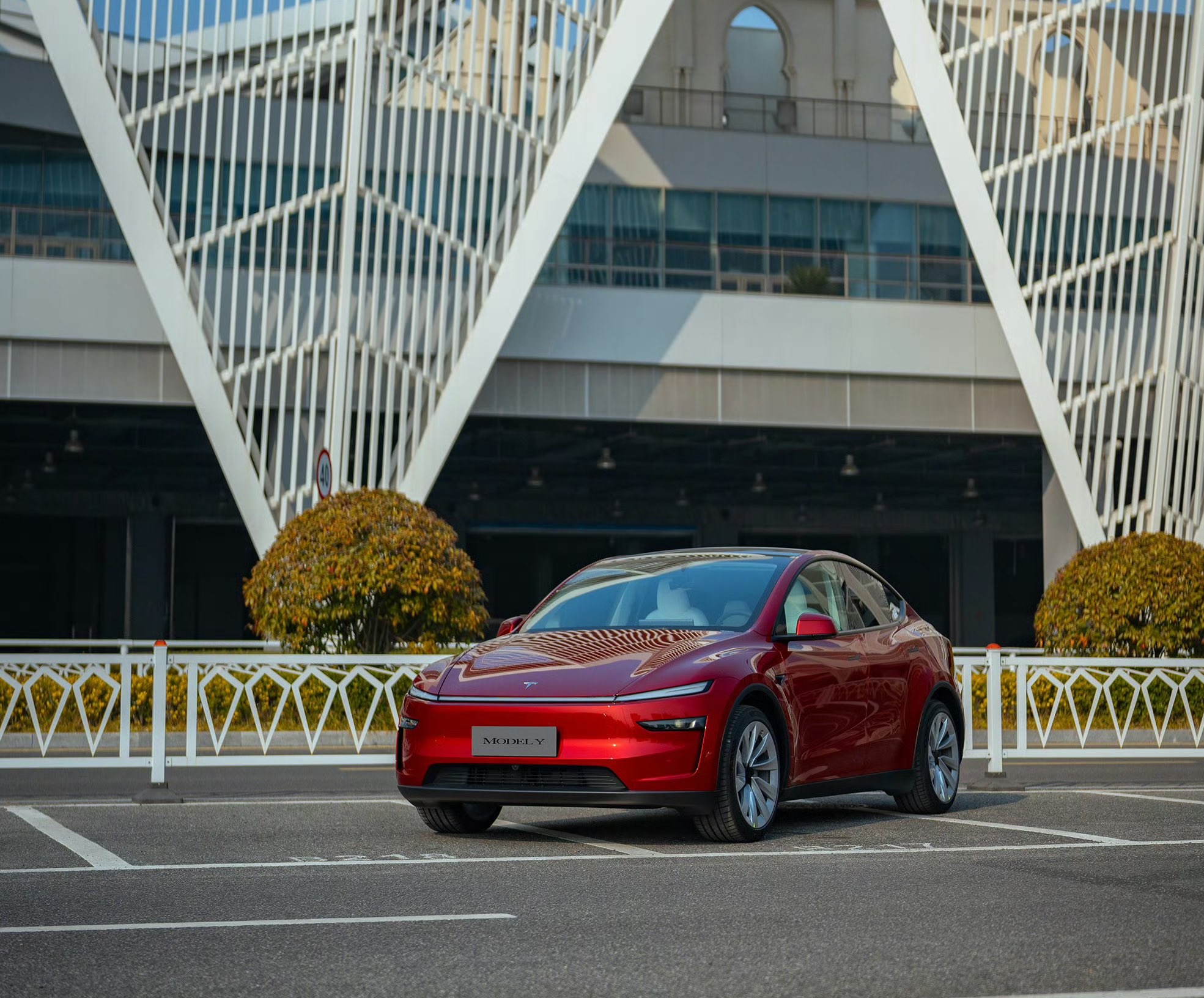
Mizuho analyst Vijay Rakesh lowered Tesla’s (NASDAQ:TSLA) price target to $475 from $485, citing potential 2026 EV subsidy cuts in the U.S. and China that could pressure deliveries. The firm maintained its Outperform rating for the electric vehicle maker, however.
As per the Mizuho analyst, upcoming changes to EV incentives in the U.S. and China could affect Tesla’s unit growth more than previously expected. The U.S. accounted for roughly 37% of Tesla’s third-quarter 2025 sales, while China represented about 34%, making both markets highly sensitive to policy shifts. Potential 50% cuts to Chinese subsidies and reduced U.S. incentives affected the firm’s outlook.
With those pressures factored in, the firm now expects Tesla to deliver 1.75 million vehicles in 2026 and 2 million in 2027, slightly below consensus estimates of 1.82 million and 2.15 million, respectively. The analyst was cautiously optimistic, as near-term pressure from subsidies is there, but the company’s long-term tech roadmap remains very compelling.
Despite the revised target, Mizuho remained optimistic on Tesla’s long-term technology roadmap. The firm highlighted three major growth drivers into 2027: the broader adoption of Full Self-Driving V14, the expansion of Tesla’s Robotaxi service, and the commercialization of Optimus, the company’s humanoid robot.
“We are lowering TSLA Ests/PT to $475 with Potential BEV headwinds in 2026E. We believe into 2026E, US (~37% of TSLA 3Q25 sales) EV subsidy cuts and China (34% of TSLA 3Q25 sales) potential 50% EV subsidy cuts could be a headwind to EV deliveries.
“We are now estimating TSLA deliveries for 2026/27E at 1.75M/2.00M (slightly below cons. 1.82M/2.15M). We see some LT drivers with FSD v14 adoption for autonomous, robotaxi launches, and humanoid robots into 2027 driving strength,” the analyst noted.
Investor's Corner
Tesla stock lands elusive ‘must own’ status from Wall Street firm
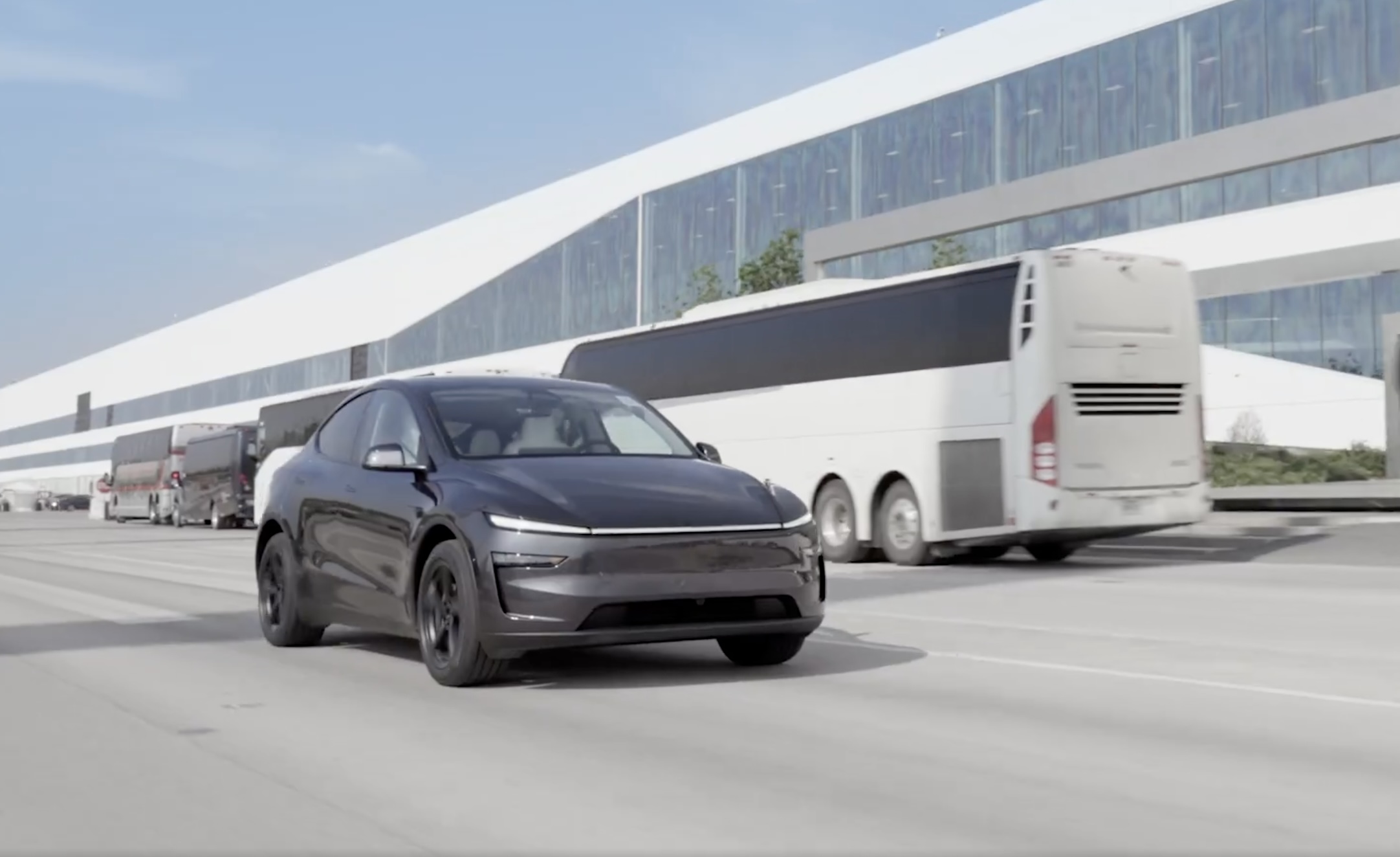
Tesla stock (NASDAQ: TSLA) has landed an elusive “must own” status from Wall Street firm Melius, according to a new note released early this week.
Analyst Rob Wertheimer said Tesla will lead the charge in world-changing tech, given the company’s focus on self-driving, autonomy, and Robotaxi. In a note to investors, Wertheimer said “the world is about to change, dramatically,” because of the advent of self-driving cars.
He looks at the industry and sees many potential players, but the firm says there will only be one true winner:
“Our point is not that Tesla is at risk, it’s that everybody else is.”
The major argument is that autonomy is nearing a tipping point where years of chipping away at the software and data needed to develop a sound, safe, and effective form of autonomous driving technology turn into an avalanche of progress.
Wertheimer believes autonomy is a $7 trillion sector,” and in the coming years, investors will see “hundreds of billions in value shift to Tesla.”
A lot of the major growth has to do with the all-too-common “butts in seats” strategy, as Wertheimer believes that only a fraction of people in the United States have ridden in a self-driving car. In Tesla’s regard, only “tens of thousands” have tried Tesla’s latest Full Self-Driving (Supervised) version, which is v14.
Tesla Full Self-Driving v14.2 – Full Review, the Good and the Bad
When it reaches a widespread rollout and more people are able to experience Tesla Full Self-Driving v14, he believes “it will shock most people.”
Citing things like Tesla’s massive data pool from its vehicles, as well as its shift to end-to-end neural nets in 2021 and 2022, as well as the upcoming AI5 chip, which will be put into a handful of vehicles next year, but will reach a wider rollout in 2027, Melius believes many investors are not aware of the pace of advancement in self-driving.
Tesla’s lead in its self-driving efforts is expanding, Wertheimer says. The company is making strategic choices on everything from hardware to software, manufacturing, and overall vehicle design. He says Tesla has left legacy automakers struggling to keep pace as they still rely on outdated architectures and fragmented supplier systems.
Tesla shares are up over 6 percent at 10:40 a.m. on the East Coast, trading at around $416.








